Waking People Up! Conspiracy Radio and the Contemporary Public Sphere
Michael Kackman / Independent Scholar
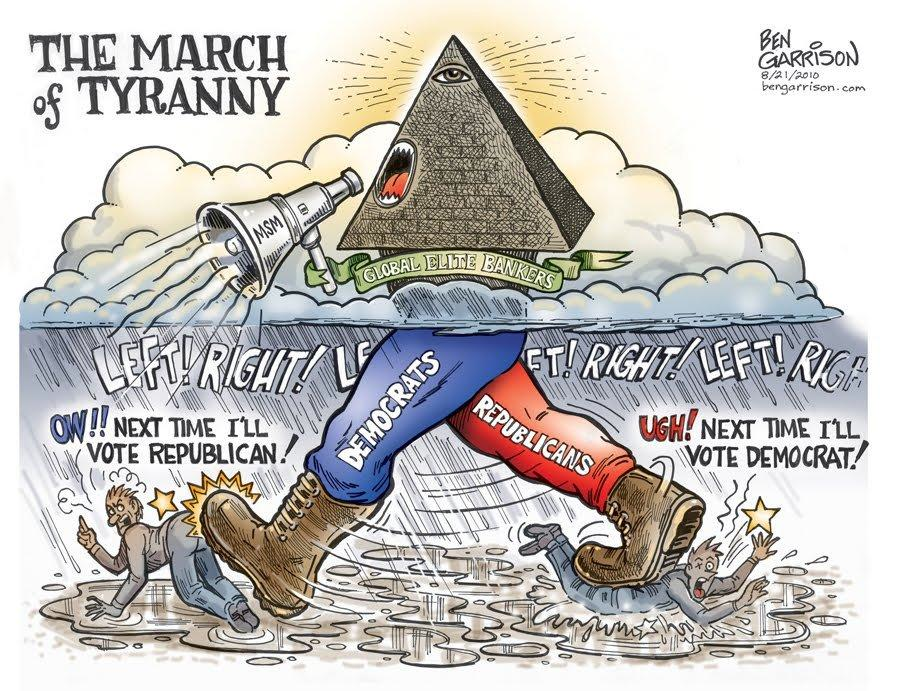
When I first moved to Austin in 2003, I began prowling the radio dial to get a flavor for the local community. Too much of Austin’s radio landscape is, like most American cities in the wake of the 1996 Telecommunications Act, largely a local information desert, with vast swaths of syndicated programming from conglomerates like Clear Channel. There are exceptions; in addition to the successful and popular NPR-affiliate KUT, Austin had, particularly in the early 2000s, several commercial stations that retained a local voice and programming. In addition, a jointly operated student and community station (KVRX/KOOP, at 91.7 FM) has remained a vital local resource.
Nothing, though, prepared me for the self-styled “Information War” being waged on a handful of pirate frequencies scattered around town. 9/11 conspiracy theories are recurrent themes there, but so are chemtrails, anti-vaccine activism, gun control, and Masonic/Illuminati rituals. Prior to 9/11, Radio Free Austin was an on-again, off-again resource, run by and for a handful of dedicated activists. Its history is unclear at best, but most accounts suggest it was originally modeled in part on efforts like Black Liberation Radio of Springfield, Illinois, and Free Radio Berkeley, a 1993 reboot of the Free Speech Movement (eventually taken off the air by the FCC, Free Radio Berkeley still maintains an active website that educates would-be broadcasters about the legal and technical issues involved in micro-broadcasting). Free Radio Austin has struggled to stay on the air as well, with little continuity of programming or infrastructure, and subject to repeated takedowns, its equipment seized by the FCC. By 2003, however, Radio Free Austin was reborn once more – this time as the voice of what eventually would come to be known as the anti-New World Order movement.
For most of the history of media studies as a discipline, the phrase “alternative media” has been associated with progressive politics, anti-corporate, community and/or identity-based activism. Free Radio Berkeley and Black Liberation Radio, the pirate radio station begun in 1986 in an Illinois housing project, clearly fit that model; in Media Matters, for example, John Fiske characterized BLR’s “blackstream knowledge” as a crucial resource for a marginalized community seeking mechanisms of self-representation and political organizing.1 More prominent today, groups like the progressive aggregator Alternet.org and the Free Press media reform movement are working hard to use micro-media to reinvent the public sphere. Theirs is not, however, the only, or even necessarily the most dominant, political orientation espoused in activist media. It is impossible to account for today’s alternative media without considering the anti-globalization efforts of those who characterize themselves as anti-New World Order Patriots – a loose coalition of libertarian and right-wing groups ranging from alternative health care and food activists to the “9/11 Truth” and Christian nationalist militia movements.2 Though largely invisible to most scholars, the US Patriot movement is nothing if not “alternative.”
Today, broadcast radio is an essential part of this movement’s discourse of public engagement, but the actual broadcast signal is less important than ever. Theirs is a fascinating distribution model, with multiple means of access: conventional commercial AM & FM radio stations, low power FM (particularly stations affiliated with evangelical churches), unlicensed “pirate” stations, shortwave, internet streaming, iPhone and Android apps, and call-in listening, which allows listeners to simply call a phone number to listen to programming live. The combination is a bit scattershot, but the cumulative result is widespread availability, including service for those who are otherwise off the grid. In some areas, Patriot radio broadcasts are carried on stations that also air more conventional right wing broadcasters like Rush Limbaugh, Glenn Beck, and Sean Hannity; in others, they’re more of a fringe media resource.
In Austin, these programs are heard on K259AJ, a 300 watt micro-FM station licensed at 99.7 FM, though in most areas of town, the station is much better heard at 90.1 FM, an unlicensed repeater. Over the years, the frequencies have shifted as the broadcasters tried various transmitters. For much of the early 2000s, broadcasters ran spots claiming use of the airwaves as a public resource, and they invited committed listeners to host transmitters on their property in order to help avoid FCC intervention. In recent years, those requests have stopped, but the signal is still occasionally interrupted, and subject to shutdown if the FCC chooses to intervene.
Austin’s pirate radio is activist oriented, with something of the sublime chaos of local cable access television (from which it has drawn some of its talent). It is not, however, non-profit. Instead, programming is sponsored by a host of survival food, military surplus, and water purification companies, including E-Foods Direct, Berkey water filters, Maine Military Supply, and Utopia Silver, which sells colloidal silver supplements. The majority of programming on Austin pirate stations is affiliated with the Genesis Communication Network, a syndicator whose website claims 650 AM & FM affiliate stations nationwide.3 The largest and most heavily promoted sponsor is Midas Resources, a gold distributor owned by Ted Anderson, the owner and creator of Genesis. Midas ads are regularly interspersed throughout the day, and Anderson often comes on-air in person during programs to announce gold and silver special offers. Precious metals, and not the fiat currency of an illegitimate Federal Reserve, are the preferred coin of the realm.
90.1 FM also carries some programming distributed by the Republic Broadcasting Network, founded in the Austin, Texas suburb of Round Rock by former GCN staffer John Stadtmiller. RBN and GCN share programming and political sympathies, though they have also at times been at odds with one another, with a history of exchanging accusations of intrigue and sabotage. Republic gained national attention when one of its prominent hosts was revealed to be a leader of the Guardians of the Free Republics, a group which sent threatening letters to every state governor in 2010. RBN distanced itself from that host, Sam Kennedy, though its programming has continued to be largely in line with the Guardians’ rhetoric.4
Other regular programming includes The Power Hour, hosted by Joyce Riley, and Katherine Albrecht, an anti-surveillance activist best known as a critic of Radio Frequency Identification, or RFID chips. Also popular is a show featuring retired police officer Jack McLamb, leader of a group called Police & Military Against The New World Order. His mission is to “prevent those in uniform from being unwittingly used to enslave the people of free nations under the anti-God, anti-Freedom (United Nations-led) world government system. The globalists intend to gain, through any available means, total dictatorial control over all the peoples of the world.”5 Like groups like the Oath Keepers and Three Percenters (who draw their name from a claim that just three percent of the colonial American population joined in armed rebellion), McLamb group asks law enforcement officers to declare their sympathies in advance of a declaration of martial law.
In the evenings, you can listen to Rule of Law Radio, whose motto is “Reclaiming our freedom with Scripture, truth, law, fundamental principles, & comedy!” The show is a platform for the Sovereign Citizen movement, which contests federal legal authority by rejecting what they call an unconstitutional “federal citizenship” made possible by the 14th Amendment. Instead, they claim “sovereign citizenship”, which they believe renders them immune from most federal law. According to the movement, by participating in such bureaucratic processes as driver license and car registration, paying federal income tax, and Social Security registration, most Americans have either willingly or unwittingly surrendered themselves as collateral for unjust federal government debt. The mechanism of this control is a so-called “straw-man”, a phantasmatic self, conjured in the act of writing one’s name in all capital letters on birth certificates, driver’s licenses, and legal contracts. Sovereign citizens, on the other hand, refuse to recognize such institutions, and reject state and federal authority entirely. They refuse to accept any document with their names in capital letters, and sometimes go so far as to establish local governmental authority, placing “Private Postmaster” license plates on their vehicles. A county sheriff is the highest authority recognized by many sovereign citizen advocates.

It’s unclear how many adherents there are to such views. The Southern Poverty Law Center and the FBI suggest that there are at least 10,000 or more active participants and advocates, while those with some affiliation with the movement range in the hundreds of thousands. Despite the claims on programs like Rule of Law Radio, sovereign citizenship has not proved to be a winning legal strategy. Some of its most prominent advocates have been imprisoned for tax evasion, as well as for promoting fraudulent tax counseling services. Others have been held in contempt of court for nuisance suits, and in 2010 sovereign citizen and tax protester Jerry Kane and his teenage son were killed in a shootout after gunning down two police officers in a traffic stop. Within the movement, Kane and his son are seen as martyrs.6
The true voice of Patriot radio, however, is Austinite Alex Jones. Jones began in public access television, and has for the past dozen years been broadcasting on the radio, his show now syndicated live daily on the Genesis network. In addition, Jones has made some two dozen documentaries, with such titles as Matrix of Evil, Dark Secrets Inside Bohemian Grove, Police State 3: Total Enslavement, and The Obama Deception. These films are advertised heavily on his radio shows, as well as promoted by his websites, www.prisonplanet.com and www.infowars.com. Jones’ broadcasts span a range of topics, but all are eventually drawn into his overarching theme, which is a critique of authoritarian government overreach. Jones has been central to the 9/11 Truth movement and a host of other conspiracy theories. Jones and his followers believe that the events of 9/11 were “false flag” attacks, organized at the highest levels of the US government. These attacks were but one step on a long road toward authoritarianism. Others include “chemtrails,” jet contrails being used as chemical dispersant vehicles to drug and/or poison our population; forced vaccination, for much the same purpose; militarization of local and state police forces; FEMA concentration camps; the rise of a surveillance state; and, most importantly, a global economic conspiracy led by “elites” bent on world domination.
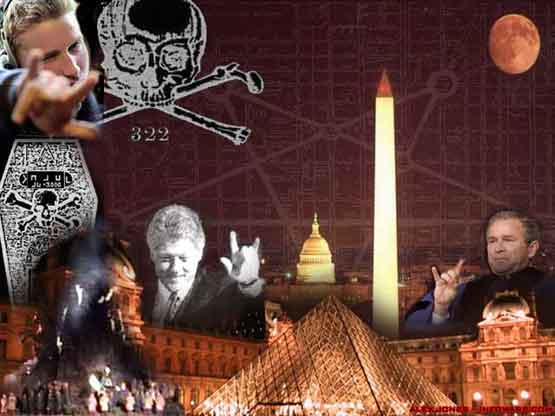
It is this last belief which binds together all of the others. The emotional and political center of Jones’ movement is his antipathy to what he calls “globalist elites” – a shadowy cartel of international bankers on a mission of global enslavement. These globalists, Jones alleges, control both the major US political parties, every President since Lyndon Johnson (in fact, they murdered John F. Kennedy, who threatened to expose their plans), the military industrial complex, the mechanisms of global capital, and virtually every US politician at the federal level other than Ron Paul. This cartel, bound together by the Satanic rituals they practice in secret at the Bohemian Grove, is coordinated by the Jewish Rothschild banking family, working in collusion with the British crown. It will stop at nothing in its pursuit of power. Jones’ mission, as he sees it, is to “wake up” the population to their dangers.
This is not a new theory.
In this, Jones’ rhetoric bears more than a passing resemblance to that of Father Charles Caughlin, the rabble-rousing 1930s radio priest, for whom the phrase “lunatic fringe” was coined. Caughlin began as a populist preacher during the Depression, but he became increasingly aligned with Christian nationalism, white supremacy, and the pro-Nazi German-American Bund. Even after evidence of the incipient Holocaust was mounting, Coughlin blamed Jews for creating the conditions within which the Nazis would emerge as guardians of their national heritage.
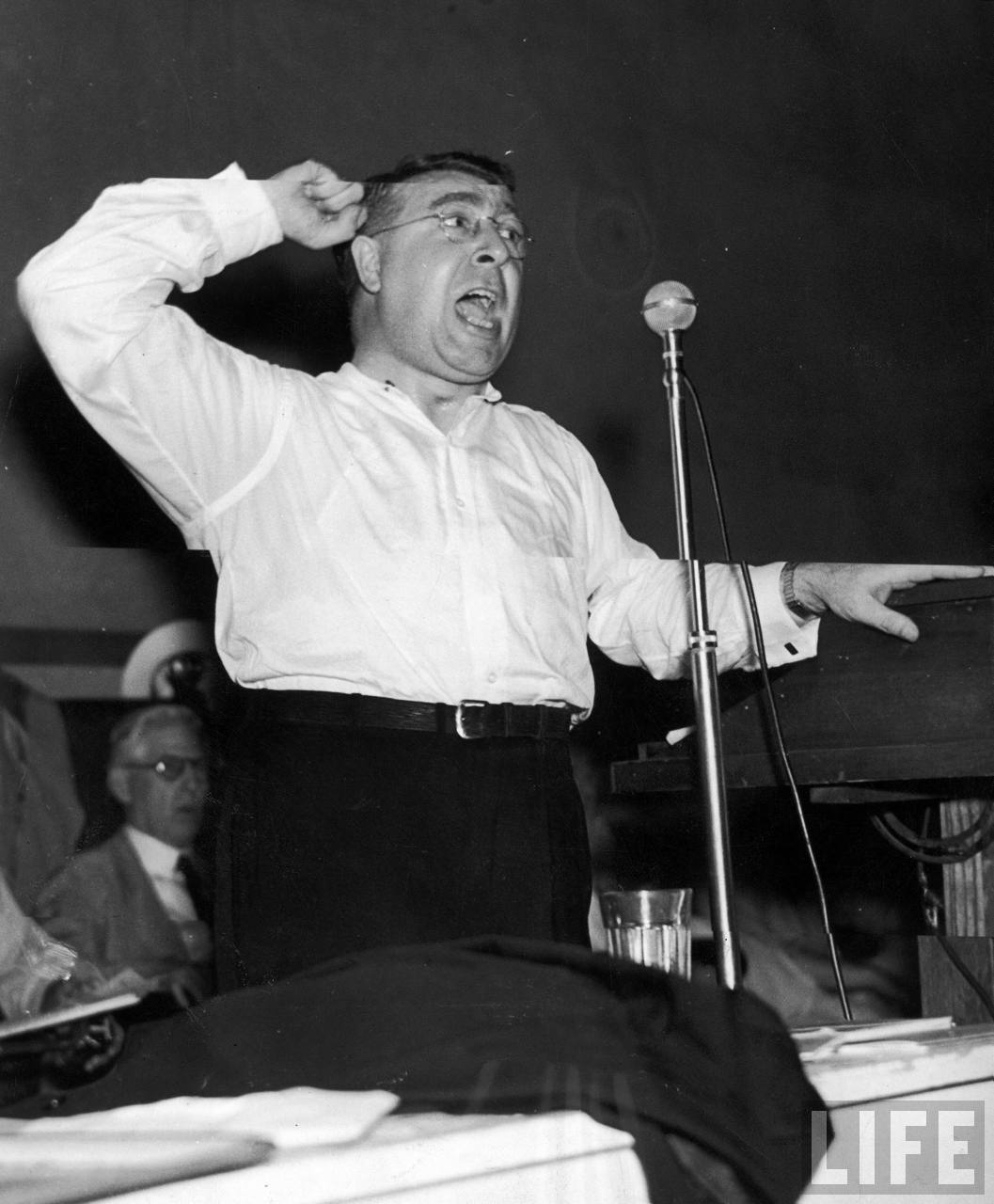
Coughlin’s claims, like those found in Henry Ford’s infamous “International Jew” pamphlet, are informed by the anti-Semitic hoax the Protocols of the Elders of Zion, which alleged an ancient Zionist conspiracy for world domination.7

Coughlin was driven off the air after it became clear that his attacks on “international bankers” were lifted from Nazi propaganda, but his ideas have lingered in the mythology of supremacist groups for decades. Even today, his speeches are circulated on the white supremacist site stormfront.org and by former Klan leader David Duke.8
The rhetoric of the modern Patriot movement even more closely resembles that of Lyndon LaRouche, who has long alleged a Zionist collusion with the British royal family to establish worldwide economic domination.9

LaRouche, who for decades has been largely an outcast to conventional political discourse, nonetheless can now see some of his most cherished aphorisms resonating throughout our political culture. The most common, and far most far-reaching, of these, is his demonization of “elites.”10 “Elite” is a word engineered to outrage; it stirs a populist contempt for unjust authority and unearned privilege. It is also among the most commonly deployed code words in today’s political rhetoric, ricocheting through the Patriot movement, Tea Party events, and more conventional talk radio programs, like Rush Limbaugh and Sean Hannity. Of the long litany of complaints that the libertarian right has detailed, the charge of “elitism” has been among the most pervasive, and most successfully deployed.
Video link: LaRouche “exposing the face of evil” on the Alex Jones show.
So, what does all of this mean for media scholars? At minimum, it seems a few key questions arise:
Is today special? That is, is there something fundamentally different about today’s political climate? It’s easy to see these developments as alarming and new, but after all, Richard Hofstadter published his famous essay “The Paranoid Style in American Politics” in 1964, and he argued that these discourses were old then. Hofstadter traced Illuminati/Masonic mythologies from the late 18th to the mid-20th century, finding long lines of historical continuity that led to an anti-Communist right obsessed with a fantasy of imminent catastrophe. His analysis rings true today:
“America has been largely taken away from them and their kind, though they are determined to try to repossess it and to prevent the final destructive act of subversion. The old American virtues have already been eaten away by cosmopolitans and intellectuals; the old competitive capitalism has been gradually undermined by socialistic and communistic schemers; the old national security and independence have been destroyed by treasonous plots, having as their most powerful agents not merely outsiders and foreigners as of old but major statesmen who are at the very centers of American power. Their predecessors had discovered conspiracies; the modern radical right finds conspiracy to be betrayal from on high.”
As Hofstadter wrote, this paranoiac attitude is most likely to emerge in times of political crisis and economic instability:
“Perhaps the central situation conducive to the diffusion of the paranoid tendency is a confrontation of opposed interests which are (or are felt to be) totally irreconcilable, and thus by nature not susceptible to the normal political processes of bargain and compromise. The situation becomes worse when the representatives of a particular social interest—perhaps because of the very unrealistic and unrealizable nature of its demands—are shut out of the political process. Having no access to political bargaining or the making of decisions, they find their original conception that the world of power is sinister and malicious fully confirmed. They see only the consequences of power—and this through distorting lenses—and have no chance to observe its actual machinery.”
What is the reach of these discourses? I want to be clear: none of this is to say that all, or even most, Patriot movement adherents are anti-Semitic or white supremacists. I’m confident that very few of them are. The coded language of “international bankers” means something different to a poster on a white supremacist website than it does to an occasional Alex Jones listener. I’m similarly reluctant to assume that every Tea Party sympathizer is a Christian nationalist or neo-Confederate segregationist. Instead, though, they seem be largely ignorant of the history of these discourses of global conspiracy, which have lain relatively dormant, invisible within much of the larger society, for the latter part of the 20th century. It seems crucial, then, to trace, how, and why, these discourses have persisted for decades in American political thought; it is also crucial to consider how and why they’ve come into relatively mainstream discourse.
What is the role of media technology in shaping this political culture? Many of these theories are decades, even centuries, old. The most overt articulations of these theories have been unacceptable in mainstream public discourse since the Holocaust, though they’ve persisted underground. Clearly, new media technologies have given New World Order conspiracy theories a much wider audience than they’ve had in years. What kinds of new linkages are now being formed that were previously impossible or difficult?
What does this mean for our understanding of the public sphere? It’s very difficult to neatly characterize the politics of anti-New World Order activists. As Alex Jones himself is quick to point out, his movement goes beyond a right-left paradigm. In Austin, a 9/11 Truther is as likely to be a hippie or punk vegetarian as to be a conservative Christian evangelical. Those nuances don’t make it onto the nightly cable news, but they’re most certainly felt by those in the streets. The political coalitions – or, to borrow Nancy Fraser’s phrase, subaltern counter-publics – formed around these issues cross wide gulfs of ideology and identity. I wonder if the emergence of these coalitions is itself something of a symptom of a broken political system, increasingly at odds with the culture it purports to represent. Our media systems enable us to identify and participate in smaller and more contingent cultural niches, but our political mechanisms struggle to keep up. Our increasingly coalitional, fragmentary, parliamentary culture is growing ever more at odds with our winner-take-all two-party political system. Frustration and alienation is always a part of politics, but I wonder if today’s alienation is fundamentally different, a product, in part, of the mechanisms by which we communicate and participate as political citizens.
What does this mean for media studies as a discipline? At minimum, these movements challenge our easy assumptions about what “alternative media” means. Furthermore, such movements likely force us to revisit the consensus/hegemony model that has so centrally shaped the theoretical and political concerns of television and media studies. The “vital center” consensus politics of postwar America were always more an ideal than a reality, and the claim of consensus has historically worked as a mechanism for the marginalization of dissent. Still, our scholarly models have recapitulated this ideal as a structuring framework; we have long understood mass media as a mechanism of hegemonic struggle and normalization. The recent mainstreaming of the Patriot Movement, however, calls into question the very meaning of such terms as mass, margin and public. And though we shouldn’t need the reminder, William Faulkner seems more prescient today than ever:
“The past is never dead. It isn’t even past.”12
10/25/11 Update
Things keep getting stranger down at the Occupy Wall Street protests.
A man who calls himself “David Smith” has been at the OWS protests for weeks, holding up signs urging people to “Google: ‘Zionists Control Wall St.'” In response, right-wing commentators in the conventional press like William Kristol and Rush Limbaugh have used this as evidence of the anti-Semitism of the Occupy movement. Despite widespread critical responses to Smith and his signs from the vast majority of the Occupy protestors, conservative bloggers have taken up the charge as well.
A closer look, however, tells a different story. Patriot radio and forums like Alex Jones’ Prisonplanet.com have been filled with discussions lately of how to redirect the Occupy movement toward abolishing the Federal Reserve (“End the Fed” is their slogan), focusing attention on what they believe to be the underlying Zionist/globalist agenda. Even former Ku Klux Klan leader David Duke has endorsed the protests, in hope of drawing attention to what he calls a Jewish financial conspiracy. Other anti-Semitic protest signs seen at Wall Street make this connection much clearer:
All public protests are complicated, tangled, and contradictory — there’s no way to predict who will participate. But to suggest that these openly anti-Semitic protestors are somehow emblematic of the Occupy movement as a whole, or of the mainstream American left in general, is to powerfully distort the much more direct line these protestors have to the Patriot and 9/11 Truth movements.
In a video interview on PJMedia.com, David Smith cites scripture that suggests at least some connection to the virulently anti-Semitic Christian Identity movement:
“I would tell them that Jesus in the Gospel according to St. John, Jesus referred to certain elements in the Jewish community as ‘children of the devil,’ Chapter 8 I believe. But, having said that, the fact of the matter is that there is clear, the fingerprints of these Jewish billionaires and hedge fund managers and bankers is clear and convincing.”
This kind of claim is repeated in a variety of places (including some of the rhetoric of the Nation of Islam), but the Biblical verse John 8:44, in particular, is best known as a shibboleth for Christian Identity. The movement, a modern American revision of British-Israelism, has been increasingly integrated into supremacist culture in the US. The movement sees Jews as illegitimate Israelites, the literal “seed of Satan”. The true Israelites, they believe, went to the British Isles, and helped found the Aryan race. Now promoted by the Ku Klux Klan and Aryan Nations, Christian Identity counts among its adherents Olympic Park and anti-abortion bomber Eric Rudolph, Randy Weaver of the Ruby Ridge, Idaho shootout that inspired Oklahoma City bomber Tim McVeigh, and the Michigan Hutaree militia that was raided by the FBI in 2010.
Tangled, indeed.13
Image Credits
1. Ben Garrison’s “The March of Tyranny”
2. Illegal “Republic of Texas” License Plate
3. The Globalists’ Language is Hidden in Plain View
4. Father Caughlin, “Jew, Christian, and Persecution” 1938
5. Henry Ford’s The Dearborn Independent
6. LaRouche’s “Demonization” of Barack Obama
Please feel free to comment.
- John Fiske, Media Matters: Race and Gender in US Politics. Minneapolis: University of Minnesota Press, 1996. See also Lawrence Soley, Free Radio: Electronic Civil Disobedience. Boulder, CO: Westview Press, 1999. [↩]
- http://www.splcenter.org/get-informed/intelligence-report/browse-all-issues/2010/summer/meet-the-patriots [↩]
- http://www.gcnlive.com/assets/forms/affiliates.pdf [↩]
- http://www.csmonitor.com/USA/2010/0402/Guardians-of-the-free-Republics-tied-to-Texas-radio-station [↩]
- http://www.gcnlive.com/programs/jackMcLamb/ [↩]
- http://www.huffingtonpost.com/2010/05/22/jerry-kane-joseph-antigovernment_n_586127.html, http://www.splcenter.org/get-informed/intelligence-report/browse-all-issues/2010/fall/sovereign-citizen-kane# [↩]
- http://www.adl.org/special_reports/protocols/protocols_intro.asp
http://www.ushmm.org/wlc/en/article.php?ModuleId=10007058 [↩] - http://www.davidduke.com/general/was-father-charles-e-coughlin-really-an-anti-semite_4243.html
http://www.ushmm.org/wlc/en/article.php?ModuleId=10005516 [↩]
- Chip Berlet and Matthew N. Lyons, Right-Wing Populism in America: Too Close for Comfort. New York: Guilford Press, 2000. [↩]
- http://www.publiceye.org/larouche/synthesis.html [↩]
- http://karws.gso.uri.edu/jfk/conspiracy_theory/the_paranoid_mentality/the_paranoid_style.html [↩]
- William Faulkner, Requiem for a Nun. New York: Random House, 1951. [↩]
- Further reading
http://www.salon.com/2011/10/12/anti_semite_gets_called_out_at_occupy_wall_st/singleton/http://pjmedia.com/tatler/2011/10/13/more-anti-semitism-at-occupy-los-angeles/
Klan leader David Duke’s commentary on the Occupy movement: http://www.youtube.com/watch?v=xKy22KsxX9k
http://en.wikipedia.org/wiki/Christian_Identity
http://www.adl.org/learn/ext_us/Christian_Identity.asp?LEARN_Cat=Extremism&LEARN_SubCat=Extremism_in_America&xpicked=4&item=Christian_ID [↩]
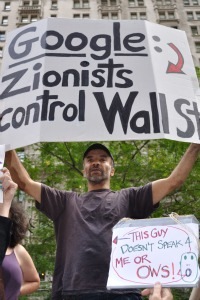
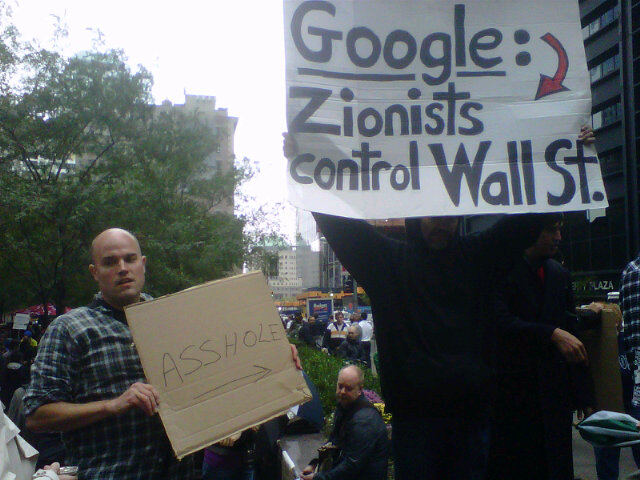
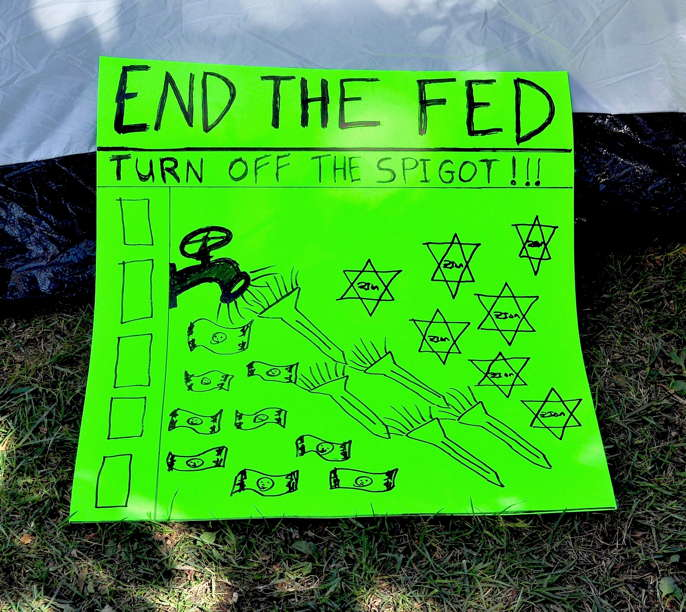
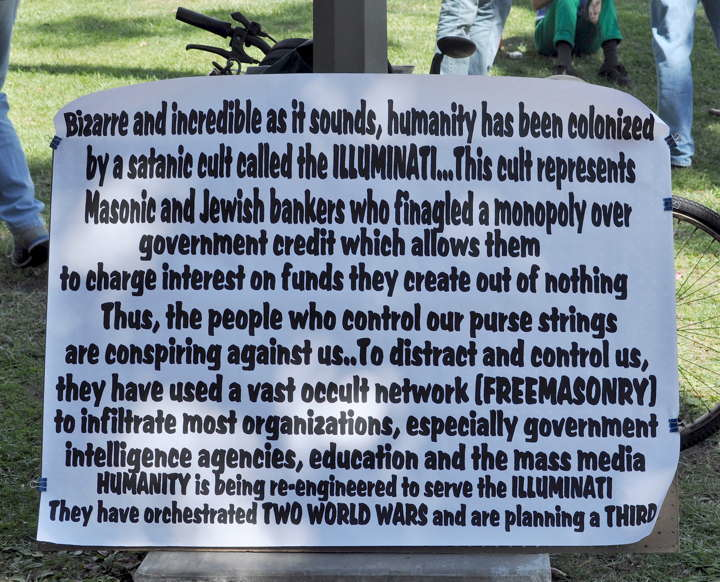
This is a great column, Michael! I especially appreciate your penultimate point about the tension between our fractured culture and ideas of two-party politics; it’s a point I think is especially salient and applicable in Austin, so it’s great that you used the local station as a case study. Thanks for your insights regarding alternative politics and media, which are quite pertinent as I read up on the latest Republican debates and walk past the Occupy Atlanta encampment as I head to the office each day.
Great column Micheal. There is a lot of interesting work on low-power radio these days and as the parabola of left and right draw more closely at the far ends work charting these connections and precedents is ever more important. A number of radio folks will be addressing these issues at SCMS this year (hopefully).
Full of telling moments indeed! @Alex Russo, I’d like to be in touch with said radio folks. If you haven’t noticed the “R” is trying to fall out of “RTF” at UT and we can’t let it! I got to do R, T and F at UT and so should future students. They say radio isn’t a promising career? Well next they may say studying radio isn’t a promising career. I say hogwash! Radio will never go away because talking to other people will never go away. In 2000 I read an article in the Austin Chronicle about LPFM and why it wasn’t coming to Austin and I was hooked. In 2007 I finished my masters report on LPFM. The Local Community Radio Act passed in 2011. In 2012 the window will open for people to apply for stations and I am available to help one and all apply. My entire report and subsequent work is here:
http://www.lp-fm.org
Have a nice day.
Please do not confuse “Radio Free Austin” with the older and now-defunct “Free Radio Austin”.
http://www.austinchronicle.com.....-22/82153/
RFA still has a few brethren on the airwaves, some representing more “progressive” views and some entirely apolitical.
“Austin’s pirate radio is activist oriented, with something of the sublime chaos of local cable access television (from which it has drawn some of its talent). It is not, however, non-profit.”
As far as I know, this is only true of RFA/GCN/RBN. The rest of us actually pay out of pocket or reach out to our local communities for support instead of profiteering.
“The majority of programming on Austin pirate stations is affiliated with the Genesis Communication Network, a syndicator whose website claims 650 AM & FM affiliate stations nationwide.”
This is only true if you consider one source of programming broadcast on multiple frequencies to be the “majority”.
HD, you’re absolutely right that RFA and FRA are very different in important ways — the differences in economics, modes of production, and content are huge. The similar names has led to ongoing confusion, including unclear attribution in some of the press coverage.
If you’re still out there, I’d be interested in chatting with you about your radio work. Please send me a note if you’ve got a minute.
Pingback: America’s fake news problem predates Facebook – Vox | Everyday News Update
Pingback: America’s fake news problem predates Facebook – Site Title